Blowhard, Esq. writes:
For approximately the 14th year in a row my pop music taste slid into middling mediocrity, but I’m perfectly OK with that. I long ago abandoned caring about or following new music. I loved The Black Keys’ “Turn Blue” and am glad there’s a place in the mainstream for blue-rock revivalists. Unlike “Brothers” which is more of a soul record or “El Camino” which is a rock ‘n roll stomp, “Turn Blue” finds them in a spacey psychedelic mode which, though not my favorite type of song, I found myself warming up to very quickly after a couple of listens. I wrote a little bit about the guitar solo on the opening track “Weight of Love” here.
When I discover a new band it’s usually purely by chance, which is the case with Chvrches’ “The Bones of What You Believe,” whose single “The Mother We Share” I came across while flipping through the radio. I didn’t realize how lacking my life was in dark yet energetic Scottish synth-pop, but there you go. Here’s my favorite track on the album, “Night Sky.”
And, oh yeah, my crush on a certain mega pop star continues with Taylor Swift’s “1989.” Yesyesyes, she’s super white, girly, and woefully square, but that’s a huge part of her charm for me. Hey, sometimes you wanna listen to Beethoven’s late string quartets or Chet Baker on April in Paris, and sometimes it’s nice to hear a cute leggy blonde sing lightweight love songs with lots of hooks. I was especially interested in this album because here Swift combined her melodic talents with hitmeister Max Martin who I genuinely think is a pop genius. I’d provide a link to my favorite song, “Style,” but Swift’s lawyers are aces when it comes to sending cease and desist letters to video sites.
This was the year I finally ditched the bloated Spotify and iTunes apps, both of which grind down my old Mac, for Amazon Music. I love Spotify’s massive catalog but I’ve never liked the actual app and with each upgrade it seemed to become more of a system resource hog. Ditto iTunes, which should be broken up into three or four programs at this point. Amazon Music is just the right compromise for me: it’s lightweight compared to the other two, gives me access to many of the albums I’ve bought on Amazon over the years, and it has a decent enough streaming catalog for me to sample from for free via its Prime service.
I only saw about a dozen movies released in 2014, but of them my favorite by far was Pawel Pawlikowski’s “Ida.” When I heard about the subject matter — a young Catholic nun who discovers she’s Jewish — I was prepared to dislike it b/c seemed like one of those dreary movies about “identity,” but it won me over pretty quickly. It turns out the movie is an unexpected combo of buddy road picture and mystery as the naive nun teams up with her blowzy intellectual aunt to discover the truth behind the murder of some relatives during WWII. There are many nice moments of observation, humor, and even sexiness as the nun tests the boundaries of her religious upbringing. I appreciated its visual style and the the two leads — first-timer Agata Trzebuchowska (pictured above) and veteran Agata Kulesza — give captivating performances. And it’s short, only 82 minutes long. It’s currently streaming on Netflix.
I upgraded my iPhone this year and turned my old one into a podcast machine. I’ve been catching up with my backlog of Marc Maron episodes and enjoying old episodes of the Bret Easton Ellis podcast, particularly his interviews with Kevin Smith, James Grey, Michael Tolkien, and Matthew Weiner. As for new 2014 podcasts, my favorite is Karina Longworth’s “You Must Remember This,” which she bills as “the secret and/or forgotten histories of Hollywood’s first century.” Recommended to anyone with a love of old Hollywood lore. My fave episodes so far are the ones on Kay Francis, Val Lewton, and Marlon Brando.
* * *
Eddie Pensier writes:
The fourth season of “Game of Thrones” aside (and taking into account the fact that I’ve yet to see the final season of “Boardwalk Empire”), the most fascinating TV I’ve seen this year must be the curiously un-talked-about “Penny Dreadful.” I’ll admit to being frustrated by this show, which inspired numerous conflicting reactions: admiration, cringing disgust, yawns, and laughter. The storyline — which if you don’t know, is a mashup of various classic horror stories including Dracula, Frankenstein, and The Picture of Dorian Gray — tends to meander quite a lot, and the show’s creators haven’t quite got the knack of wrangling the multiple character arcs. It does become much more focused and streamlined about halfway through the 8-episode season. I also like that the show is straightforwardly horrific at some times, while indulging the impulse for luridly Grand Guignol melodrama at others. (In fact, several of the show’s episodes take place at the Grand Guignol theatre.)
PROS: Eva Green. I repeat, EVA. GREEN. If there were true cosmic justice in the world of entertainment (all together now: BWAHAHAHA), Green would have not only won every award there is, but would have inspired a few to be created in her honor. Her Vanessa Ives runs the gamut from primly Victorian spinster to sparklingly flirtatious coquette to full-on batshit-insane demon-possessed harpy. But the moments of hers which affected me the deepest (and which were frankly much more frightening than any of the supernatural or gross-out bits) were her agonizing scenes where Vanessa, thought by her parents to be merely insane rather than inhabited by an evil spirit, is consigned to an asylum. Her terror, pain and loneliness are truly uncomfortable to watch. Green has always been a favorite actress of mine, but in “Penny Dreadful” she becomes one of the undisputed greats, with a grit and fearlessness that other performers should carefully emulate.
Timothy Dalton. Fans of stunt casting will appreciate the casting of former James Bond Dalton alongside former Bond Girl Green (not to mention former Bond writer, creator John Logan, and former Bond director, executive producer Sam Mendes). Dalton, distinguished and still heartthrob-handsome at 70, performs the neat trick of simultaneously giving the show its moral axis, while calibrating his performance to reveal his not-wholly-pure motivations over time.
Josh Hartnett. I’d vaguely known that Hartnett was A Big Thing about ten years ago but never paid much attention to him. He gives a nicely modulated performance here as the American sharpshooter Ethan Chandler.
Production designer Jonathan McKinstry and costume designer Gabriella Pescucci. The show looks to-die-for gorgeous and authentic.
CONS: Billie Piper. Oh God, Piper is beyond awful as Hartnett’s tubercular girlfriend. Besides not rising above her frankly clichéd, hooker-with-a-heart-of-gold role, she delivers all her lines in what is allegedly a Belfast accent but comes across as an unintelligible Irish-inflected mumble. One other member of the Pensier household claimed to understand her delivery 60% of the time. I was lucky if I caught 30%.
Reeve Carney. Carney does what he can with Dorian Gray, but the part is so underwritten that his purpose appears to be to look sleekly androgynous while banging half the other characters. I’ll give Carney credit though: I had no idea his English accent was not native until I heard him in an interview speaking in his natural, American voice. Well done.
Rory Kinnear. Another fault of the writers. Frankenstein’s monster could be seen as a dead-end or a monumental challenge, but Kinnear gets to glower, gnash his teeth, and occasionally emote. There’s no progression to his story, and no humanity (yes, I realize how nonsensical that sounds). I didn’t blame him for his character’s weaknesses, but that didn’t stop me from being mildly annoyed every time he came on the screen.
Is “Penny Dreadful” ultimately worth your time? I’d say yes, absolutely. It is imperfect and sometimes confounding, but it absolutely draws you into the world it has created. Fans of horror, Gothic thrillers, camp, luridly over-the-top acting and plotting, and Eva Green should check it out on Amazon or iTunes.
* * *
Fabrizio del Wrongo writes:
I love taking in a good best-of-year list, but I’m not sure I’m qualified to make one: Where culture goes, I’m anything but up to date. For instance, it usually takes me about half a year to catch up with the movies everyone tells me I should see. So take this as more of an overview of my personal experiences and observations pertaining to the cultural byproducts of 2014. Lord knows it ain’t definitive.
Podcasting. Has 2014 been the year of the podcast? The medium has been around for a while, of course, but the ubiquity of smart phones and instant over-the-air downloading have finally brought it into the mainstream. It seems everyone is talking about podcasts and podcasters. Among other things, this has led to a revival of the long-form celebrity interview. Podcasts like Marc Maron’s WTF and The Nerdist typically spend over an hour chatting with their guests, and while there’s nothing revolutionary about that, the freedom from the constraints of time and format allow for a ranginess and depth that you just don’t get from a radio or television interview.
TASCHEN’s “The Complete Little Nemo.” An enormous tome the size of a Ten Commandments tablet (and just about as heavy), I received this book for Christmas, and I’m over the moon about it. It’s about as straight-forward and as lovingly produced as you’d expect a high-end TASCHEN product to be. No big blocks of text, no graphical insets, nothing distracting in the margins, just enormous, gloriously colored pages from Winsor McCay’s groundbreaking comic strip. Actually, “strip” is misleading: McCay presents his stories in giant rectangular panes that are like windows into alternate universes. If you’re at all interested in 20th-century graphical art, you’re sure to get something out of this — provided, of course, your back can withstand the strain of lifting it. I wrote about McCay here and here.
The Cohen Film Collection’s restoration of D.W. Griffith’s “Intolerance.” The high-definition format brings out the delicacy, immediacy, and suppleness of Griffith’s art. It’s enough to restore your faith in the medium. I wrote a bit about this here.
Natalie Moore. Is it possible to predict which erotic performers will catch our interest, or to fully explain the ones who do? Natalie Moore was my favorite sexy discovery of 2014. I love her bruise-prone skin and her soft, unfussed-over fleshiness. I also love the juvenile sense of glee she projects while pulling up her shirt or tugging aside her panties to reveal the goodies. Whatever she’s doing, she seems to get off on the idea of her performances nearly as much as her audience does. You can sense her jumping outside the moment she’s creating, as though she’s dying to take part in your observation of it. You gotta love a girl who owns her exhibitionism like that.
Bill Burr’s “I’m Sorry You Feel That Way.” Burr is one of the great performers working today in any medium. I wrote about him here.
Marco Bellocchio’s “Dormant Beauty.” I saw this a couple of years ago, but it debuted in American theaters in 2014, allowing me to feel (for once) ahead of the curve. The picture is an Altmanesque ensemble piece that has an almost musical quality to it. (Good Bellocchio always feels a bit like opera.) Bellocchio takes the stuff of episodic television and uses it as a jumping-off point for an essayistic delving into Italian society. Themes and insights are kept pinging between the storylines, Bellocchio constantly embroidering on them, until it’s all a bit overwhelming. Bellocchio is a passionate leftist filmmaker of the ’60s who has continued to turn over the stones of his radical past while working out his political feelings on screen. That’s why his best movies are such roiling experiences — they spring from a consciousness that refuses to become settled. In comparison, the recent films of his contemporary Bernardo Bertolucci feel flat, diagrammatic, and somewhat curdled. My best guess on Bertolucci: Once he figured out that movies and revolution weren’t synonymous, his talent wilted. Not so Bellocchio: He just keeps drilling down into experience and people. It’s what makes him a humanist.
Steve Sailer’s coverage of the UVA rape hoax. Steve Sailer is about the best blogger in history. To refer to him as a blogger is a compliment, because the folks who call themselves journalists these days don’t, for the most part, deserve to be classed with him. Sailer’s recent coverage of the UVA scandal is all the proof that’s needed of the essentialness of blogging, and of voices that are independent of the mainstream.
Zishy.com. No-frills contemporary cheesecake. I think it’s the handiwork of L.A. photographer Zach Venice.
Eva Green in “300: Rise of an Empire” and “Sin City 2: A Dame to Kill For.” Here’s hoping she’s even more naked in 2015. (She’s a terrific actress, of course, but let’s not overlook her tits.) [Sax wrote about 300: Rise of an Empire here. — BE]
Yik Yak. Have you tried Yik Yak? It’s a smartphone app that allows you to eavesdrop on anonymous chatter in your area. You can even contribute to the . . . I don’t think it’s appropriate to call it a “conversation.” Graffiti, maybe? Yes, that’s what Yik Yak reminds me of — it’s the contemporary version of the profane scrawl archaeologists are still finding in old Roman shit houses. The shit house is an appropriate venue, or metaphor, or whatever: Yik Yak seems designed for folks who want to take in something light while sitting on the john. What you’ll find there varies. Sometimes it’s a dirty joke, sometimes it’s a quip that reframes your day.
Back in October, I visited The Cloisters with Paleo Retiree and another friend. Situated in northern Manhattan, where it scarcely even feels like Manhattan, and comprised of bits of medieval architecture pilfered from all over Europe, the place has a layered, crazy-quilt appeal that still managers to feel organic. Stained glass! Filtered light! Rooms opening into galleries opening into gardens! I took it as an antidote to the imposed rationality and cold calculatedness of modern architecture. [I shared some photos of my Cloisters visit here. — BE]
ESPN “30 for 30” episodes “When the Garden was Eden,” “Playing for the Mob,” “Slaying the Badger,” “Bad Boys,” and “Requiem for the Big East.” I think I like sports documentaries more than I like sports.
“Fading Gigolo.” This sex comedy, one of the few American releases I’ve seen this year, is currently available on Netflix Instant. It’s written and directed by actor John Turturro, and though it’s overly hesitant in places, it exudes a warmth and an openness regarding sex that I found enjoyable. The New York of the movie is a boisterous, working-class city unfamiliar from modern movies. It’s more like the New York of ’70s and ’80s movies — the New York of Paul Mazursky (RIP). All the actors are good, but I especially liked Sharon Stone, who gets to undercut her rich-bitch persona with hints of tenderness and vulnerability. She also gets to show off her legs, which still look terrific. Vanessa Paradis is affecting as an aging Hasidic woman yearning to be touched. When venturing out of her protective Brooklyn neighborhood, she dons a wig that makes her look like a screwed-up version of Macha Meril in Godard’s “A Married Woman.
“God Help the Girl” soundtrack. Belle & Sebastian leader Stuart Murdoch’s film is the sort of semi-catastrophe that you can’t help loving a little. It’s worth checking out, especially if you’re interested in the spectacle of attractive kids playing dress-up and doing their best to evoke the cloistered tenderness of youth on the cusp of adulthood. But if you want to enjoy what’s best in it, simply buy the soundtrack: It’s probably the most gripping Belle & Sebastian album since the ’90s. In fact, it might be better than B&S: The actorly, it’s-all-a-game manner in which the film’s stars put across the material neutralizes some of the preciousness that affects Murdoch’s work, which is often just a tad too sincere in its mopiness. Kids acting out Belle & Sebastian, it turns out, are more compelling than actual Belle & Sebastian. I’m not sure what I love more, the song or Emily Browning.
“The Wind Rises.” This animated drama from Japanese master Hayao Miyazaki is the closest thing in contemporary movies to an old-school epic of wartime. At times it reminded me of De Sica’s “The Garden of the Finzi-Continis,” at others of David Lean. That’s not to say it isn’t fully a Miyazaki film: The aviation material builds on the filmmaker’s earlier flights of fancy, and it’s as meticulously detailed as you’d expect of a product of Studio Ghibli. But it’s the picture’s straightness and its realism that grab hold of you — and in a way so subtle that it’s difficult to make sense of the movie’s effectiveness as your’e watching it. I suppose it should come as no surprise that Miyazaki, the man who made the magnificently placid “My Neighbor Totoro,” should be such a master of tone and pacing, but the context of the “The Wind Rises” makes those qualities feel revelatory. If only we could expect the same level of traditional craftsmanship from our live-action filmmakers. The story involves the efforts of a young engineer to design an aircraft on par with Western standards. Miyazaki uses it to sketch in a history of Japan between the wars, and to show how our cleanly-designed aspirations are often all mixed up with the unaccountable messiness of the real world. It’s a great movie.
* * *
Fenster writes:
I watch a fair amount of current films and TV mini-series but that’s where my interest in the current more or less ends. I don’t keep up well with music. But let’s start there to get it over with.
I actually do keep up with current music in one sense: I am bombarded daily with the current top-40 courtesy of my two high school-aged daughters, with the result that I am constantly plagued by catchy earworms from the radio. Most of these are terrible. There are some fun exceptions.
Meghan Trainor’s “All About That Bass” and “Lips are Movin” are great fun, and accessible to a geezer on account of their throwback quality.
Ditto Nico and Vinz’s “Am I Wrong”. And yes, like Blowhard, Esq. I admit a fondness for Taylor Swift, an ingenue capable of re-invention.
But you don’t know how hard I have to work to get Adam Levine and Bruno Mars earworms out of my head. I have imposed a “no Levine and Mars” rule in the house and car, and my daughters obey, giggling. The gag order doesn’t seem to work somehow, and Levine, Mars & Co. keep sneaking back into my noggin somehow. As a result, I have to go into my own back catalog to find a trove of catchy stuff capable of driving the invaders out. I have done a lot of re-listening to old power pop favorites like Jellyfish’s Spilt Milk. Their 1993 release is, for me, Beatles-worthy stuff, and almost as good as the Fab Four at driving out Adam Levine infestations.
I also went to a very formidable local production of Sweeney Todd.
Thus fortified with an ample supply of Sondheim tunes, I was able to do battle with the bad earworms for at least a month. My arm is complete again!
Not a lot to report on current books as I don’t work to keep up. However, I do read all of Michael Connelly’s Harry Bosch/Lincoln Lawyer books, and 2014 saw a somewhat minor entry into the Lincoln Lawyer canon: The Gods of Guilt. If you have gotten this far with Connelly’s work you will be compelled to read it for completeness sake alone, and won’t be disappointed. If you haven’t gotten this far, go back to the beginning, with Bosch, and start from scratch. Say, 1992’s The Black Echo, and go from there.
Going back in time just a bit, in 2014 I read George V. Higgins’ only collection of short stories, The Easiest Thing in the World. Higgins made writing seem like the easiest thing in the world, too, when it is anything but for a writer at his level. The kind of prose you can take down in large, satisfying gulps.
And speaking of writers with that kind of gift, don’t forget Donald Westlake’s amazing novel, Memory, which I wrote about here. And staying on Westlake for just a moment longer, I enjoyed Darwyn Cooke’s graphic novelization of The Outfit, a Parker novel by Westlake written as Richard Stark.
Paleo has written a lot about documentaries, and I gotta agree that we are living in very good times where that art form is concerned. This year, I was particularly fond of the following.
- “The Act of Killing.” Well, I can’t say I was fond of this odd and unsettling film. But it combines a kind of goony humor with scary insights into the human condition.
- “Beware of Mr. Baker.” Jay Bulger’s profile of Ginger Baker. More goony humor and scary insights into the human condition. Great drumming, too.
- “Milius.” A worthwhile treatment of the odd man out of the 70s directorial revolution.
- “Calle 54.” OK, it’s 14 years old but I watched it again this year, as I do every several. Great performances of Latin jazz, including this phenomenal workout by Michel Camilo and bandmates.
All good stuff, but my favorite documentary of the year was Sarah Polley’s “Stories We Tell”. People talk about artists being fearless but here you see Polley being fearless in real time and in the real world, as she makes a documentary that looks for truth in her own interesting but fractured family history.
All of the above are on Netflix Instant.
Non-documentaries? I liked “A Late Quartet” (written about here), “Le Week-end” (written about here) and “Escape from Tomorrow” (written about here). I also enjoyed:
- “Devil’s Knot.” Who killed the kids in that small town?
- “Locke.” A terrific performance and a penetrating film, as duly noted in most reviews. When did he figure out it was his intention all along to crash his former life to bits?
- “In Secret.“ An old fashioned melodrama of the type seldom made nowadays.
- “Something in the Air.” The Sixties is seldom depicted on screen in a way that truly evokes the oddness of the era. Olivier Assayas pulls it off here.
- “Words and Pictures.” A romance I was not intending to like, but the performances from Juliette Binoche and Clive Owen won me over.
- “Sin City 2.” Not as exhilarating as the first, but pretty darn good. And yes, I add my voice to the chorus: Eva Green!
As for television, Breaking Bad‘s conclusion of course. Also: the Brit cop show Luther (Idris Elba would make a stellar James Bond, and why not?) The Swedish-Danish co-production of The Bridge, another cop procedural. The Killing, yet another cop procedural set in the always-overcast Pacific Northwest. Orphan Black, the slightly unhinged semi-sci fi show about genetics and identity. Anything with Anthony Bourdain.
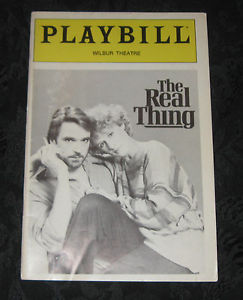 This was the year I was going to finally see Tom Stoppard’s The Real Thing. I’ve seen and enjoyed most of Stoppard’s works over the years but found The Real Thing tough to track down. I’ve read it a number of times, savoring the wit and picturing Jeremy Irons spouting the Stoppard’s characteristic verbiage. So my wife and I went to see a local performance. I knew the play so well that I did not realize that in fact I had seen a performance previously. I’d dragged my wife 50 miles to see it in another city a year or so before. She doesn’t know Stoppard well and so didn’t know until the curtain went up that she’d seen it before. In the middle of the first act, she leaned over to advise me that all this was old news. Me, I was still clueless. I literally had no realization I had in fact seen it before. In time, the recollection of the earlier performance came back to me.
This was the year I was going to finally see Tom Stoppard’s The Real Thing. I’ve seen and enjoyed most of Stoppard’s works over the years but found The Real Thing tough to track down. I’ve read it a number of times, savoring the wit and picturing Jeremy Irons spouting the Stoppard’s characteristic verbiage. So my wife and I went to see a local performance. I knew the play so well that I did not realize that in fact I had seen a performance previously. I’d dragged my wife 50 miles to see it in another city a year or so before. She doesn’t know Stoppard well and so didn’t know until the curtain went up that she’d seen it before. In the middle of the first act, she leaned over to advise me that all this was old news. Me, I was still clueless. I literally had no realization I had in fact seen it before. In time, the recollection of the earlier performance came back to me.
I was inclined to attribute this at first to…ummm…the natural processes of aging. And that may have something to do with it. I am more persuaded that I had Jeremy Iron’s performance so committed to memory — despite not having ever seen it — that a lesser performance by a local company did not even register. Even now, I cannot recall the main characters performances in the play I just saw. But, in my head, Irons remains as excellent as ever in the role of Henry.
* * *
Glynn Marshes writes:
 One of the most interesting cultural events of 2014, in my opinion, was the so-called Amazon-Hachette dispute.
One of the most interesting cultural events of 2014, in my opinion, was the so-called Amazon-Hachette dispute.
On the surface, the event was about a contract negotiation about e-book pricing between the market leader of online book distribution and one of the so-called “Big Five” mainstream publishers (Hachette’s imprints include Hyperion and Little, Brown). Amazon wants to be able to set e-book prices low, because that moves books. Hachette wants them high, because print publishing is moribund and expensive, and Hachette (like all trad publishers) increasingly relies on e-books’ hefty margins to turn a profit. Hachette also knows that if ebooks are priced too low, it will accelerate the cannibalization of the print book business; it’s trying to put the brakes on that trend.
The negotiation became a cultural event because it highlighted the enormous chasm between the name-brand, enormously rich marquee writers who have succeeded via traditional publishing and the niche-y midlisters who increasingly leverage independent publishing to earn money on their titles. A dozen or more wealthy Hachette authors, including James Patterson, Douglas Preston, Malcolm Gladwell, Stephen King, Donna Tartt, and Steve Colbert, attacked Amazon publicly, painting the distributor as the Satanic crusher of author fortunes for such crimes as removing pre-buy buttons from forthcoming Hachette titles (titles for which Amazon couldn’t promise availability due to the contract dispute). These authors, and Hachette, received positive-to-fawning coverage from mainstream media platforms, including the NY Times, Guardian, and LA Times.
Meanwhile a number of prominent (and, it must be admitted, also rich) indie authors, including J.A. Konrath, Barry Eisler, and Hugh Howey, took to the Internet, publishing passionate blog posts that analyzed the dispute and fisked the mainstream coverage. These authors argued that Amazon is merely trying to serve its customers and that distributors naturally want the power to set their products’ pricing. Also of note: Amazon pays authors who publish through its Kindle platform 35-70% of the gross price of ebook titles; traditional publishers typically pay far less, making it much more difficult for midlist authors (writers who don’t reach enormous readerships) to earn anything like a decent living.
In the end, Amazon and Hachette settled. But as with so many public arguments today, the two sides remain worlds apart in terms of both assumptions and perceptions. People in the Hachette camp view Amazon as a near monopoly (or, more accurately, a monopsony, i.e. a company with too-extensive control over a buyer-seller infrastructure) and continue to urge consumers to boycott it. People in the Amazon camp see the company as a much-needed market disruptor; in this view it’s threatening precisely because it is upending an industry long dominated by international conglomerates that are unimaginative, smug, and out-of-touch.
Also fascinating, if predictable: Hachette’s champions are, essentially, publishing’s nouveau riche. They defend Hachette all the more fiercely because they were once nobodies, and traditional publishing made them celebrity multi-millionaires. And so they posture as if they’re protecting civilization against barbarism, literature against the gauche and messy intrusion of e-commerce and self-publishing, while in fact they are one percenters trampling on the interests of fellow-writers — people who are what they once were, a few decades ago, when they were nothing — when they were living in trailers and working at laundromats.
I adore craft beers, and although I’d be hard-pressed to pick my favorite style, I’m thrilled about one that started cropping up in 2014: the Gose.
Pronounced GOZE-uh, this beer (like Saissons and Lambics) began as a European folk beer. It’s related to the sours – Goses are tart – but also has a trace of saltiness and spice (coriander). Goses are also typically low ABV, which makes them terrific session beers.
I tasted my first Gose a year ago: Anderson Valley’s Kimmie, Yink, and Holy Gose (click here to read the etymology of that name). It remains my favorite Gose, although I find I like it better when it’s on draft than canned; it’s also a seasonal beer, so now’s the time to hunt for it at your local craft brew pubs.
Another brewer that makes a nice Gose is Westbrook; they also can their beer so you’ll likely be able to track down their Gose if you’re on the east coast of the US. But given how delicious this style of beer is, I expect to see many more craft breweries experiment with Goses in 2015. So keep your eyes open and if you find a nice one, save a bottle for me 🙂
* * *
Paleo Retiree writes:
In 2014 I found myself spending 3/4 of my Facebook time avoiding the usual News Feed and hanging around private Facebook groups instead. This may be just me; after all, my willingness to explain myself and my determination to help others see a little more clearly have both declined markedly in recent years. I don’t think so, though; many friends have told me they’re either doing the same or ditching FB entirely. Why is this happening?
In my own case, as delighted as I am to be in regular FB touch with loads of friends, relatives and acquaintances, the banality of the usual left/right political debates and the predictability of the usual sports-and-TV-and-kids-and-holidays water-cooler-style yak finally wore me down. I was reminded all too often of how my eyes would glaze and my attention would drift during meetings at work. In my wife’s case, she’d finally had her fill of explosions of liberal self-righteousness. Good lord some people love to grandstand. For both of us, being patient with conventional opinion finally got old, and handling the easily-set-off got tiresome. Some of the private groups I frequent, by contrast to the world of the News Feed, are as freewheeling, convivial and rowdy as the best early blogs. Engines can rev; thoughts can be given thorough airings; hilarity, rudeness and affability can coexist and enhance each other. Going too far isn’t just permitted, it’s expected.
When, for example, I venture my conviction that we’re living through a very peculiar moral panic, many News Feed people have no idea what I’m talking about. Am I, you know, endorsing rape? My private-group pals, whether or not they agree, know exactly what I’m referring to and what I mean. Learning can occur too. A couple of traditionalism-oriented groups I belong to have got me noting down names of books and thinkers I’ve barely heard of. It may be a sad thing that we-who-are-willing-to-entertain-unusual-ideas-and-opinions are edging away from the News Feed. It may be true that we’re abandoning some of our efforts to reach out and help others, and that we’re lazing around echo chambers instead. But it’s also a huge relief. And the ease of conversing can’t be beat. Here’s hoping a few visitors to Uncouth Reflections join us on Facebook, where numerous parties are in full swing.








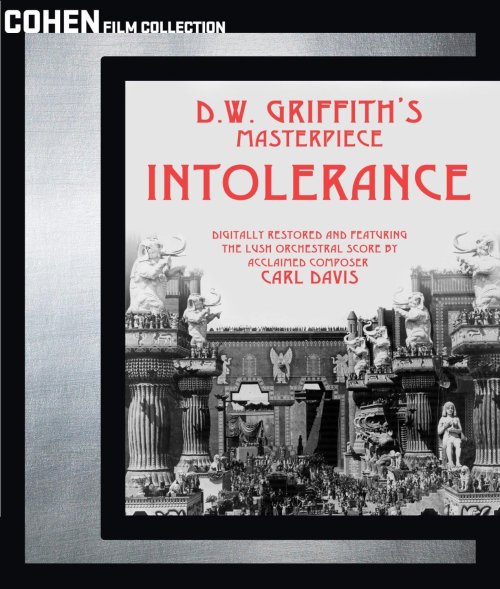

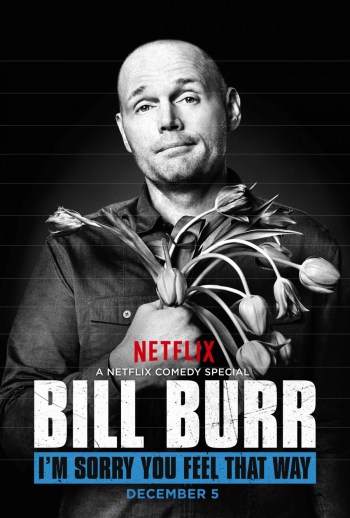



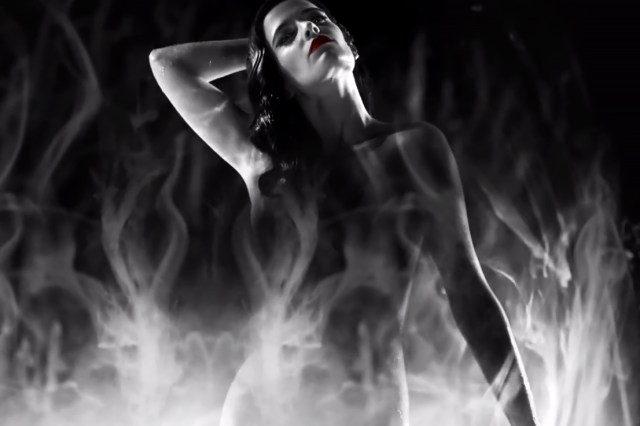




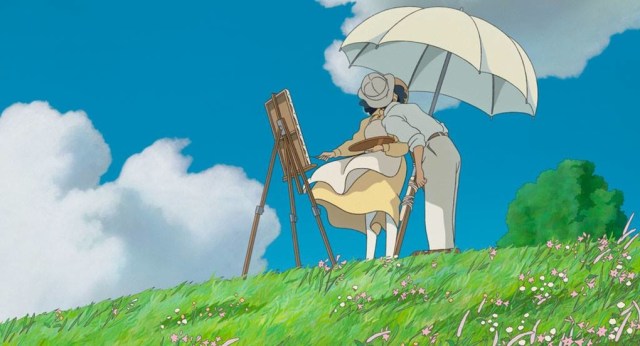


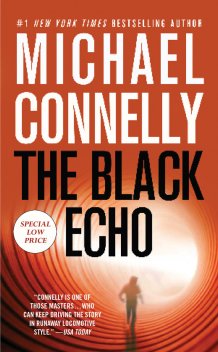

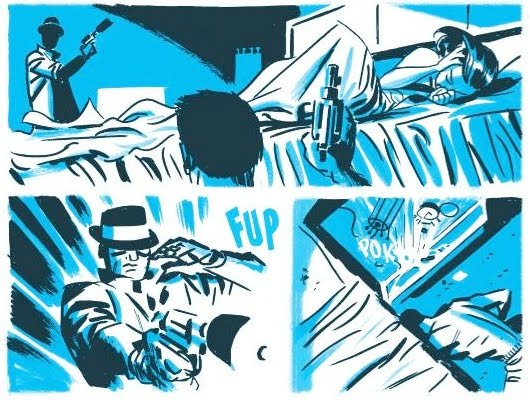
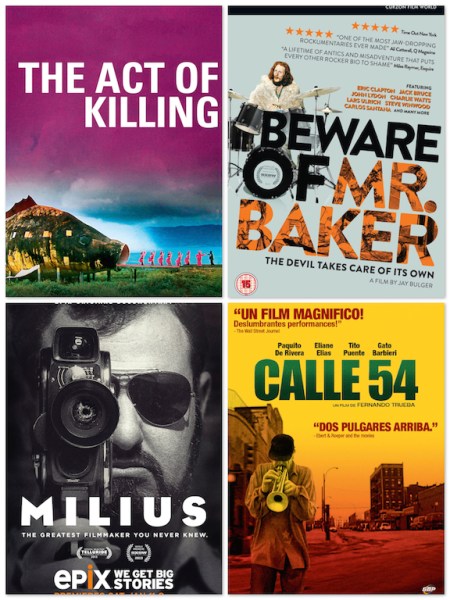
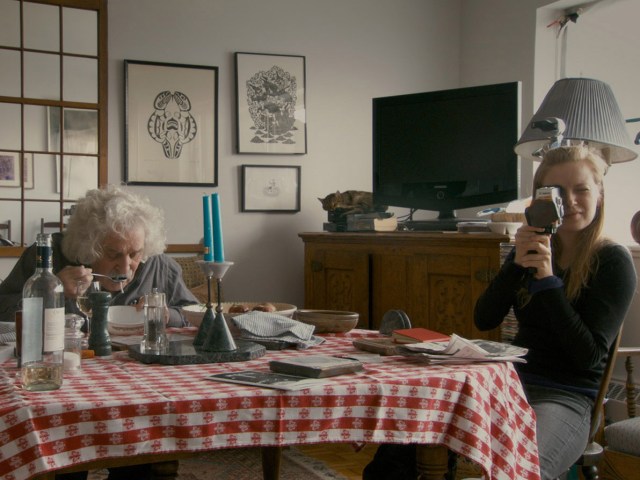
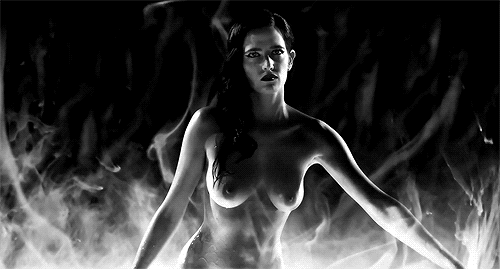


Facebook easily became the culture center for 2014, and as a result, I began to carve it up into channels. Couldn’t agree with you more that groups are the way to tolerate it now. But even then I think there is 1000% more to look into than I have any hope of doing anything about… And as a result I’m completely unable to pick any cultural favorites for the year!
LikeLiked by 1 person
I can only give informed opinions on “Penny Dreadful,” Bill Burf’s new comedy special, and Steve Sailer’s excellent coverage of the UVA Rape Hoax Scandal, but in all three cases, the thoughts here largely mirror mine (although I like the “Frankenstein’s Monster” character arc on “Penny Dreadful,” for the most part).
LikeLiked by 2 people
Pingback: Assorted links
Pingback: Assorted links | Homines Economici
Sorry but that Anderson Valley Gose beer is foul. And I’m an Anderson Valley fan. I bought a six pack and emptied five of them down the drain. I couldn’t bring myself to even offer them to others.
LikeLike
I discovered Steve Sailer via Patton Oswalt’s mentions of him on his twitter feed. Been reading him daily ever since. It’s fun watching him deconstruct the New York Times on a regular basis.
The NYT should hire him as an editor. He could save them a lot of grief and embarrassment.
In the meantime, it’s great entertainment.
LikeLike
Great, how do I get in one of these private groups? FB is driving me stark raving mad. My “friends” tend toward shared graphics of paranoid butthurt self-affirmation. I say, who are these people saying these terrible hurtful things to you? Or, are these just voices in your own head?
LikeLike
If you leave pertinent and interesting comments on other people’s posts, someone is likely to recognize your value and invite you. Or you could always start your own.
LikeLike
I really liked Gigolo, too. Turturro as an actor (Five Corners) and as a director seems to have a taste for the overripe and the slightly magical realist. This film put me in the mind a bit of Moonstruck.
Podcasts: my favorites is In Our Time. It’s a throwback kind of thing–a very traditional BBC take on serious academic subjects like philosophy, science, history and literature. Melvin Bragg, the host, does an amazing job keeping up with the actual serious scholars he brings on to talk about their topics with depth. This is the place to go if you want to actually learn about the Corn Laws, neo-Platonism, Bertrand Russell, Queen Zenobia, Hindu ideas of creation or Strabo’s Geographica. Even the odd an arcane topics like the female pharaoh Hatshepsut can be interesting. Just forget for just a moment that life is a constant spectacle and that you are compelled to be continually entertained with flashing lights and dancing girls.
http://www.bbc.co.uk/podcasts/series/iot/all
LikeLike
The best blogger is Cambria Will Not Yield. I’m not sure but I think he’s an American ex-cop.
LikeLike
Pingback: 21 Underappreciated Movies (From The Last Decade Or So) | Uncouth Reflections
Pingback: Our Favorite Things in 2015 | Uncouth Reflections
Pingback: Beyoncé, Carly Rae Jepsen, and The Song Machine | Uncouth Reflections
Pingback: Our Favorite Things in 2016 | Uncouth Reflections